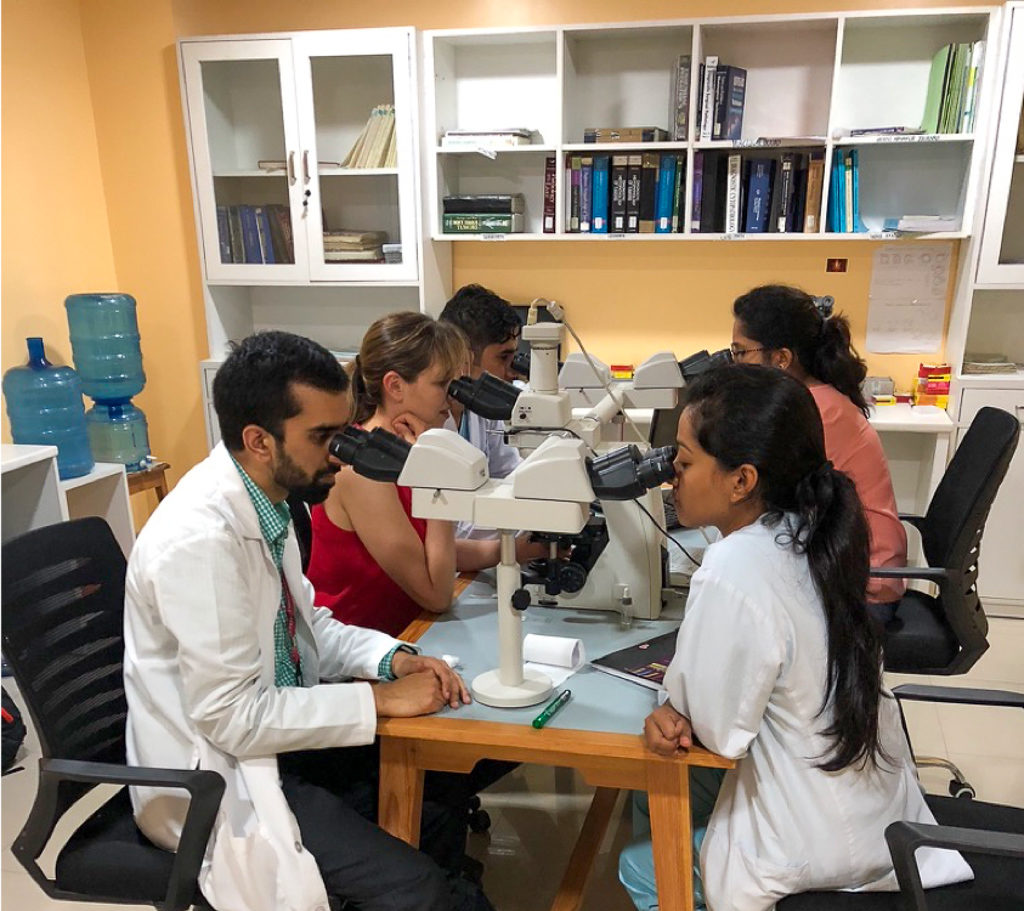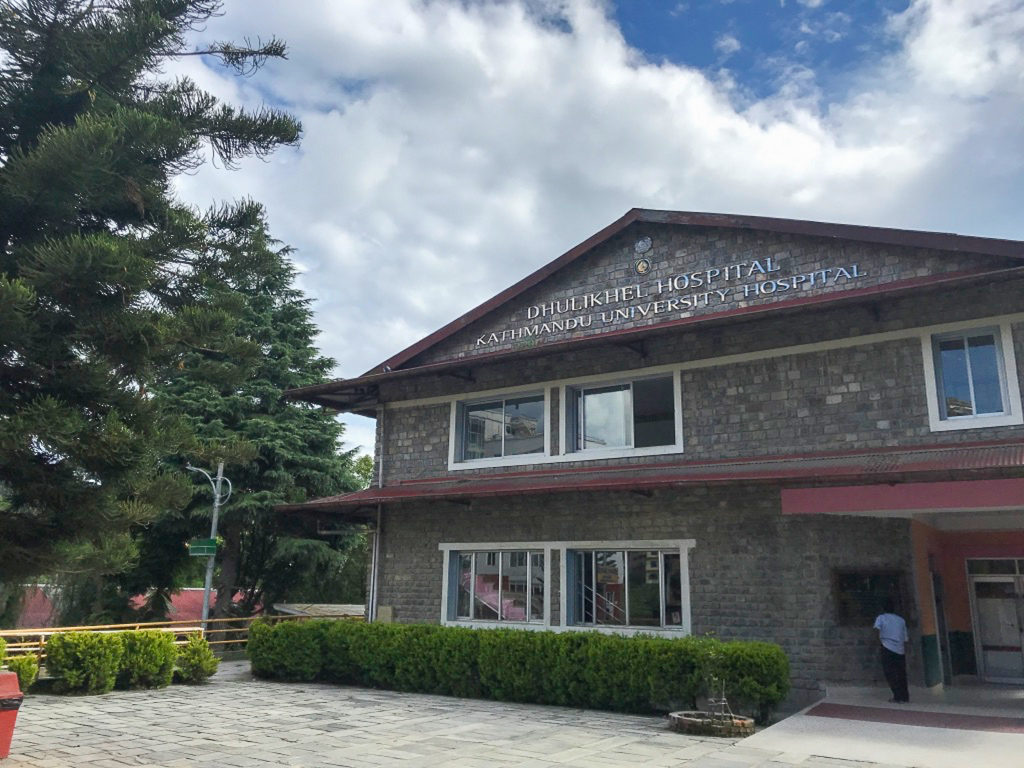Published: 05/16/2019
By Jody Berger, Stanford Center for Innovation in Global Health
One mile high and about 20 miles east of Kathmandu, Dhulikhel Hospital was founded in 1996 to provide high quality care to 2.5 million people in central Nepal, regardless of their ability to pay. The hospital became the fastest growing service provider in the country and hospital leaders want to do more. They’re committed to expanding training programs for physicians and increasing the facility’s diagnostic capabilities to better serve their patients.
To accomplish both goals, Dhulikhel physicians joined forces with collaborators 12 time zones away at the Stanford School of Medicine.
Elizabeth Bailey, MD, MPH, leads one collaboration from the California campus. A Clinical Assistant Professor in Dermatology, Bailey came on faculty at Stanford in 2016 interested in building global health dermatology and dermatopathology, shaped by her own experience as a resident rotating in Africa. Michele Barry, senior associate dean for global health, saw an opportunity and introduced Bailey to the team at Dhulikhel.
“We started out by doing video conference calls every two weeks,” Bailey said of the virtual meetings that include four residents and four faculty members in Nepal, Baily, and one or two Stanford residents. “We discuss complicated cases and get additional ideas for clinical input on diagnosis or treatment.”

For the Stanford residents, the calls provide a chance to experience global health from their own homes. And for their counterparts in Nepal, the calls offer specialty exposure to dermatopathology not currently present at Dhulikhel Hospital, which allows experts to identify disease microscopically by looking at skin biopsy slides.
In July 2018, the teams met in person for the first time, when Bailey traveled to Nepal with Stephen Lewellis, MD, PhD (Dermatology) and Atif Saleem, DO (Pathology), with funding from Stanford’s Center for Innovation in Global Health. Bailey, Lewellis, and Salem were able to learn more about Dhulikhel’s patient population, tour the facilities and assess both needs and capabilities. Bailey also spent days in the clinic working with her Nepalese collaborators.
“They tried to bring in all the patients they had been thinking about biopsying,” she said. “There’s a certain set of diseases you can figure out without biopsy, and there’s another set where biopsy is critical. I think that’s one of opportunity they saw to grow as a department.”
Bailey examined patients, reviewed the pathology with the Dhulikhel dermatologists and pathologists, and discussed setting up an Immunofluorescence lab, which would help diagnose cases of autoimmune bullous diseases, a blistering skin condition that is often referred to Dhulikhel from around the country.
In the one-week trip, Bailey also spoke at a meeting of the Society of Dermatologists, Venereologists, and Leprologists of Nepal where she met members from other hospitals who were equally interested in dermatopathology.

“That became my long-term goal,” Bailey said, “to develop a shared virtual dermatopathology curriculum in Nepal. We start with a year-long feasibility study at Dhulikhel shaped by the clinical needs we were learning about from our case conferences with the hope to ultimately expand to other programs throughout Nepal. With video conferencing technology, it becomes easy to bring places limited by location together.“
The benefits of an international collaboration like this are not limited to either side of the partnership.
“Stanford Dermatology is very fortunate and grateful that Dr. Bailey is directing our global health program in dermatology,” said Paul Khavari, MD, PhD, professor and chair of Stanford Dermatology. “It’s a wonderful opportunity to bring Stanford care to new communities and also to help our trainees develop a unique set of skills and interests in global health. We also greatly appreciate the leadership of Dr. Michelle Barry in overall global health efforts at Stanford and are pleased to be a part of them.”
Bailey plans to return to Nepal this summer to continue building the online curriculum and continue developing relationships with dermatologists throughout Nepal.
